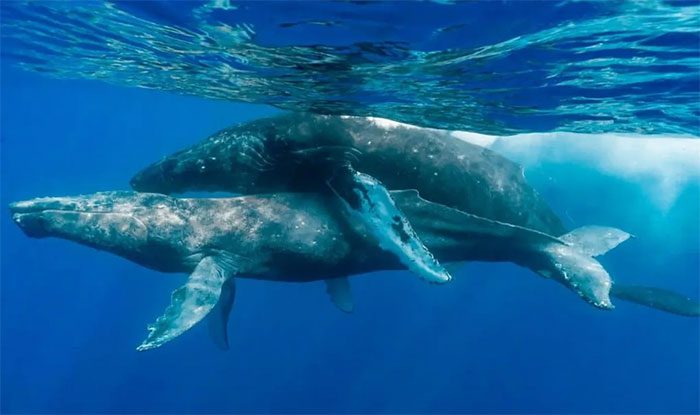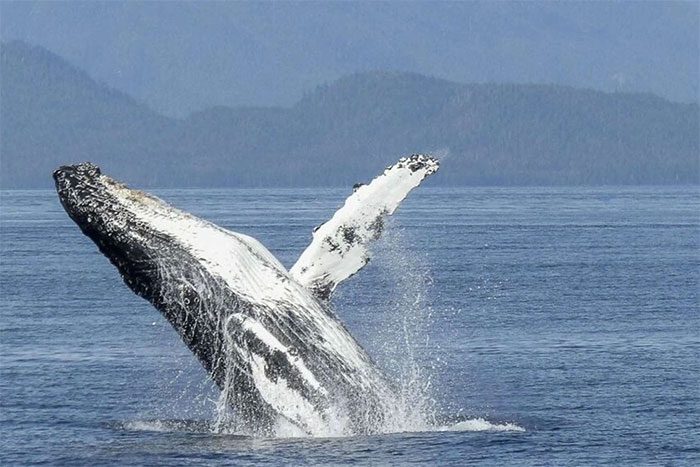Humpback Whales Exhibit Same-Sex Behavior for the First Time.
Stephanie Stack, a researcher with the Pacific Whale Foundation, recently revealed a photograph showing two male humpback whales engaging in sexual activity near the water’s surface.

First image showing two humpback whales mating. (Photo: IFLScience).
According to this expert, although humpback whales are among the most studied whale species, there has been no record of their mating behaviors until now.
The sexual behavior of humpback whales remains largely a mystery, and the discovery of same-sex interactions has further surprised the scientific community.
“This discovery challenges our preconceived notions about humpback whale behavior,” Stack shared. “It is truly a remarkable event.”
The observation of same-sex interactions among humpback whales adds them to a list of over a thousand species on Earth that exhibit this behavior.
While researchers are eager to delve into the details of how humpback whales “engage with same-sex partners,” conservationists are looking for evolutionary explanations.
They suggest that the purpose of sexual behavior—without reproductive intent—can vary widely among animal species. What these whales may be attempting could include establishing or reinforcing dominance relationships, forming alliances within pods, or relieving stress.

Humpback whales remain a mystery to science. (Photo: Getty).
|
Humpback whales can grow to about 15 meters in length and weigh up to 30 tons. This species has attracted significant scientific interest due to its unique body structure and lifestyle. Humpback whales primarily feed on mollusks but can consume approximately 6.6 million tons of food each year, which is about 18,082 tons in a single day. This figure is astonishing as it is hundreds of times greater than the weight of an adult humpback whale, which typically weighs around 30 to 36 tons. They also communicate in a very unique way, using “songs”—which are actually sounds—combined to form a series of units known as a “phrase.” These “phrases” are repeated to create a “theme,” which this species sings in a specific order, resulting in a song that lasts between 5 to 30 minutes; a humpback whale’s song can even last for several hours. |





















































